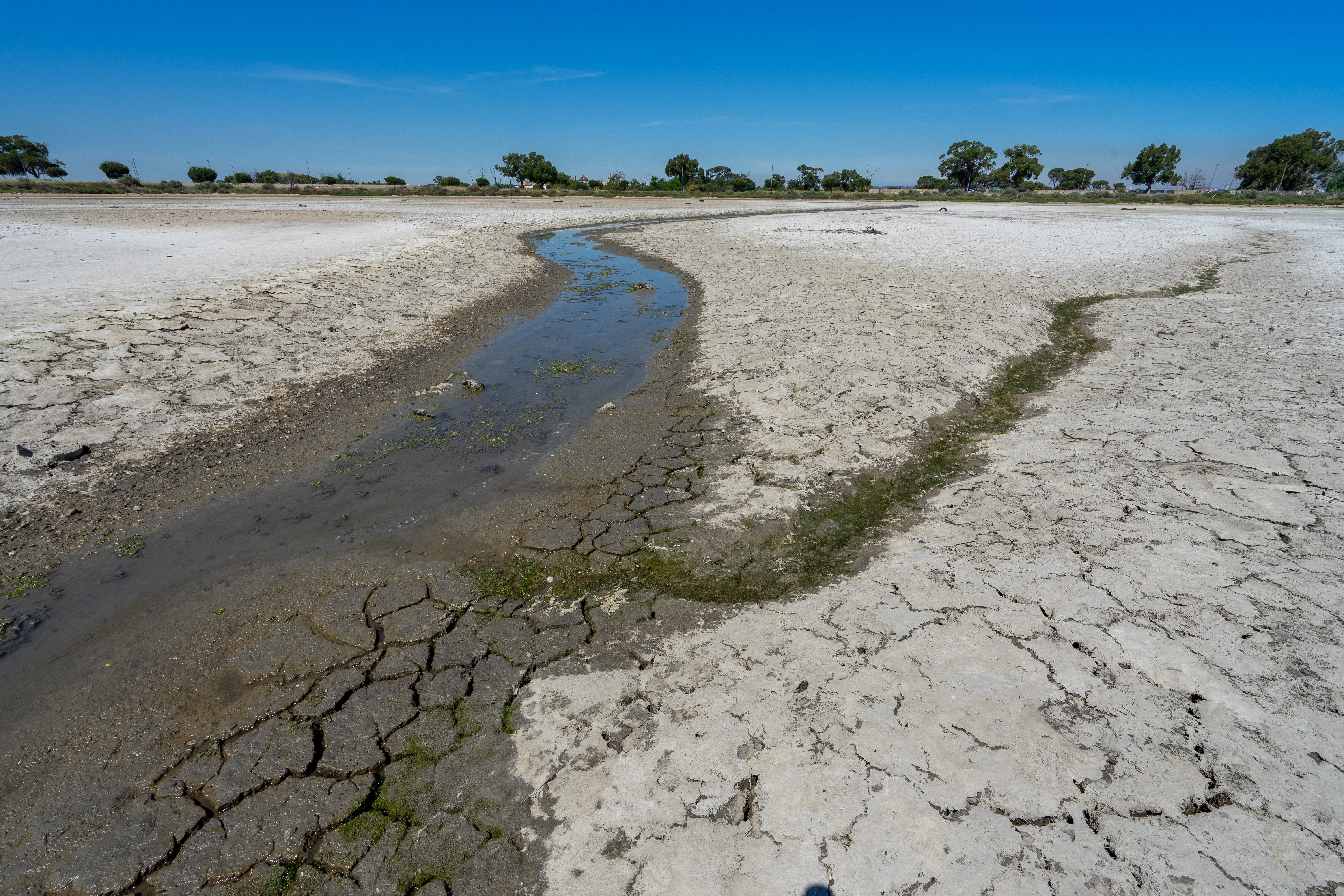Climate change in New Zealand
Dealing with the uncertainties
What are the consequences of climate change in New Zealand, and how is the country dealing with them? One way is by using Deltares tools to assess adaptation options, explains climate adaptation expert Judy Lawrence.
New Zealand is surrounded by ocean and therefore has a moderate climate, but it is subject to many natural hazards that are being made worse by the effects of climate change. ‘We’ve recently had marine heat waves and extreme ex-tropical cyclones,’ says Judy Lawrence in the Deltares office in Delft. ‘Extreme rainfall has caused landscape scale damage with high sediment loads with flooding, affecting people and economic activities. Droughts are also becoming more severe. These extreme weather conditions affects urban and rural communities, agriculture, water availability, our infrastructure.’
Lawrence attended the annual conference of the Society for Decision Making Under Deep Uncertainty (DMDU) at Deltares last autumn, where she presented New Zealand’s experience with Dynamic Adaptive Policy Pathways planning (DAPP). She continues: ‘Our new SeaRise information shows that parts of New Zealand are sinking quite rapidly which is posing near term issues for planning our infrastructure as it becomes affected by sea level rise.’

Judy Lawrence
Judy Lawrence is Adjunct Professor at the Climate Change Research Institute at Te Herenga Waka-Victoria University of Wellington in New Zealand. She is also a member of the Climate Change Commission in New Zealand and a lead author of the UN’s Intergovernmental Panel on Climate Change (IPCC) Sixth Assessment Report. She works at the policy-science interface in New Zealand and co-authored the national Coastal Hazards and Climate Change guidance which has the Deltares Dynamic Adaptive Policy Pathways (DAPP) approach at is centre.
Room for New Zealand’s rivers
The New Zealand government produced its first National Risk Assessment in 2020 and its first Adaptation Plan in 2022. Lawrence is a Commissioner on the Climate Change Commission, an independent government body that provides advice on emissions reduction and adaptation. The Commission reports on the progress and effectiveness of the National Adaptation Plan every second year and prepares a National Risk Assessment every six years. ‘So there's an institutional architecture that drives the adaptation work which is critical for implementing adaptation,’ she notes.
“Extreme rainfall has caused landscape scale damage with high sediment loads with flooding, affecting people and economic activities”
Judy Lawrence, Adjunct Professor
Like the Netherlands, New Zealand has projects to make room for the rivers. ‘We also have examples in our urban areas where we've given the catchment more space and absorptive capacity through removing housing and rewilding waterways,’ Lawrence says. ‘Planting trees and restoring wetlands have also provided some protection for the land, by reducing sediment in flood waters whilst creating amenity for communities and more healthy ecosystems.’
Assessing options
It was ten years ago that Lawrence first heard about the anticipatory planning work at Deltares. ‘In 2013, we were trying to understand how to deal with the changing risks and uncertainties of climate change impacts in New Zealand,’ she recalls. ‘Marjolijn Haasnoot from Deltares saw a reference to a report we’d done on LinkedIn and contacted me. She thought we might be interested in looking at dynamic adaptive policy pathways.’ That year, Lawrence happened to be in Europe for a conference and visited Deltares.
The Dynamic Adaptive Policy Pathways approach (DAPP), a decision-making tool for dealing with uncertainty and changing risk, really resonated with Lawrence and her colleagues, because, she says: ‘It provides a systematic way of assessing adaptation options over time and stress testing them against different possible futures.’
Deltares also introduced Lawrence and her colleagues to serious games. ‘They
helped train us to use them,’ she says, ‘and Deltares helped us develop two New Zealand games, a river game and a sea-level rise game, which Deltares has on its website. So we used that in New Zealand as a way of getting our regional councils staff and decision makers to think about the long term and to develop different pathways and options in a ‘safe’ context.’

Change and uncertainty
Lawrence soon introduced the DAPP approach to New Zealand and now it’s being used in several communities. ‘We've become a bit of a test-bed in New Zealand,’ she explains. ‘We're experimenting with the approach on broader issues than just rivers and the coast, anything that involves change over time or uncertainty.’
Various councils and consultants around the country have already used the approach for transport planning, roads and the water service infrastructure, planning for pest management, endangered species and the coastal environment. Lawrence: ‘It helps to understand how the world is changing. You can involve the public in that conversation, in workshops with communities, or in more technical ways using modelling. It’s eminently scalable.’
Threatened mountain huts
The coastal guidance document (national Coastal Hazards and Climate Change guidance) that Lawrence co-authored is based on DAPP, and government departments, local governments and consultants in New Zealand are familiar with it. Some aspects of it are embedded in legislation. The Department of Conservation, for example, has used DAPP for their adaptation plan for threatened mountain huts, as glaciers are retreating rapidly and moraine walls are collapsing.
She adds that ‘applying the approach together with serious games, is an innovation that helps prime users to think about the impact of today’s decisions over time as conditions change in uncertain ways. This way, we can avoid locking in adaptation actions that create inflexibility and thus costly adjustments in the future.’

National Coastal Hazards and Climate Change guidance
Key lessons
Lawrence mentions several key lessons learned in New Zealand, and elsewhere, that are very important for the successful use of DAPP in adaptation plans. Involve communities from the outset to understand their values, for example, have a very clear mandate and have clear governance arrangements. She adds: ‘Anticipate change and act early.’
She also believes it’s crucial to have funding systems in place to implement the results of a DAPP analysis. ‘The missing pieces in the institutional arrangements are the funding and the legal property issues associated with managed retreat, which is the planned relocation of houses, people and activities,’ she says.
Recently, in the Hutt Valley in New Zealand the council has bought and removed more than 75 properties to make room for the river. DAPP was used to inform the options for flood risk management in that instance – New Zealand’s first application of DAPP now implemented. Coastal examples have followed – in the Hawkes Bay and Bay of Plenty where community panel processes informed a wide range of options and implementation strategies.
Tools for dealing with change
Apart from New Zealand, DAPP has also been used in many other parts of the world. Lawrence: ‘It’s become quite a gold standard for dealing with deep uncertainty and change, alongside other DMDU tools, like Robust Decision Making and novel forms of Real Options Analysis that address the costs of adaptation options. Deltares with TU Delft and other international colleagues have been at the forefront of these developments working globally with countries like New Zealand.’ She concludes: ‘We hope we can get ahead of the game as climate change intensifies and accelerates. Collaborative learning is key’.


